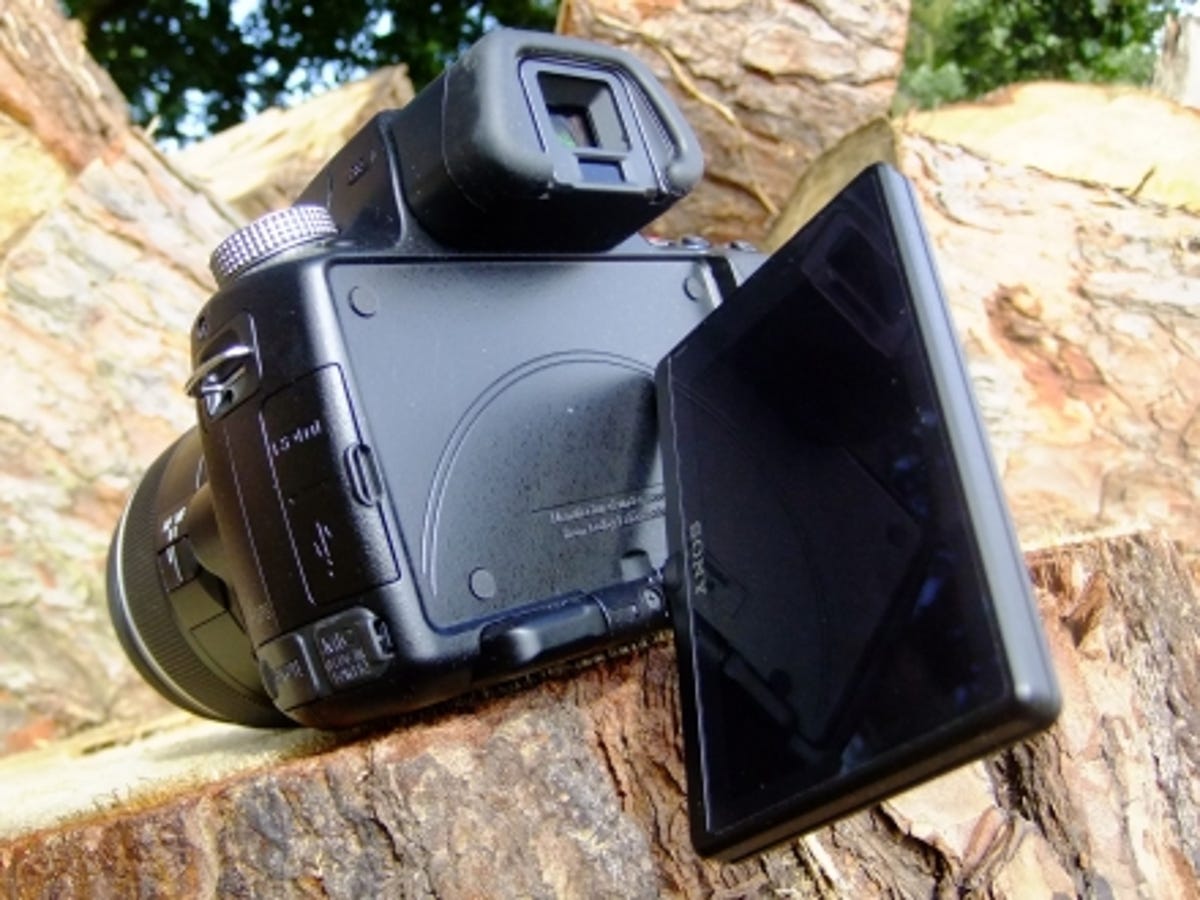 Why You Can Trust CNET
Why You Can Trust CNET Sony Alpha SLT-A55 review: Sony Alpha SLT-A55
Sony's taken a risk with the Alpha SLT-A55 camera, but it's paid off. The A55's innovative translucent-mirror technology makes for a blisteringly quick snapper that delivers excellent results.
Don't be fooled by your first glimpse of Sony's Alpha SLT-A55 and SLT-A33 cameras -- they may look like traditional digital SLRs but, underneath the bonnet, they pack an interesting new approach. We took both cameras out for a spin, and this review of the A55 highlights the difference between it and the Sony Alpha SLT-A33.
The Good
The Bad
The Bottom Line
Although they sit in the middle of Sony's dSLR range, competition comes in the form of hybrid cameras like the Panasonic Lumix DMC-G2. Both the A55 and A33 come with an 18-55 mm kit lens. According to Sony, the A33 kit will cost between £600 and £700 when it's released in early September. The A55 will cost between £700 and £800 when let loose in early October.
Rapid-fire snappers
The A55 is a 16.2-megapixel model, while the A33 packs 14.2-megapixels. The A33 uses the same sensor as the Sony NEX-5 and NEX-3, the first cameras in Sony's NEX interchangeable-lens compact range, while the A55 uses a larger APS-C CMOS sensor. With their innovative translucent-mirror technology, the A55 and A33 blur the lines between traditional dSLRs and newer interchangeable-lens cameras.
Although they look, feel and handle like dSLRs, technically these cameras aren't: they have a mirror inside, but the mirror doesn't move, so they don't have the single-lens reflex action that gives SLRs their name. The mirror is semi-transparent -- also known as a pellicle mirror -- and lets 70 per cent of the light through to the main sensor, while the rest is bounced up to a phase-detection autofocus sensor.
This means you get continuous autofocus, both when snapping moving subjects and shooting video. In practice, the full-time autofocus and lack of moving parts mean the cameras are blisteringly fast: the A55 captures up to 10 frames per second, while the A33 fires off 7fps.
The high-speed shooting modes don't allow you to adjust exposure, but dropping the frame rate to a still creditable 6fps means you can take charge of the settings.
Small wonder
The fixed mirror means the cameras are relatively small -- 23 per cent smaller and 26 per cent lighter than the Sony Alpha DSLR-A550, to be precise. They're very light, but with a solid and comfortable rubberised grip.
The lack of a moving mirror also means that the viewfinder is electronic, rather than optical. The advantage of an EVF is that you can preview your settings, and see 100 per cent of the frame. Sony's 'Tru-Finder' EVF also offers on-screen whistles and bells, including focus-point magnification, a histogram, and a digital spirit level. The 1,440,000-dot EVF is bright and clear, and the on-screen display looks like a video game, which we admit we found pretty cool.

Moving the camera away from your eye automatically switches between the EVF and live view on the screen. The cameras' fold-out screens have a new design, with a fully articulated pivot meaning you can see the 76mm (3-inch), 16:9 LCD from either side, as well as straight up and down. It's super-handy for shooting with the camera held up high or down low.
The A55 includes a GPS module. This tags your photos with the location of where they were taken, so you can place them on a Google map. It's a fun feature if you travel a great deal or are planning a holiday, but we suggest thinking hard about whether the A55's GPS functionality and small specs increase are worth the extra money over the A33.
The A55 offers Sony's 'Sweep Panorama' feature, which lets you take extra-wide photos by slowly panning the camera across a scene in one movement. You can also soup these pictures up to 3D, although the 3D mode isn't very forgiving: if your sweeping movement isn't smooth enough, the finished picture is ruined. 3D snaps can be viewed on a 3D-capable television via HDMI.
Jumping focus
The continuous autofocus is impressively quick, but, in some situations, the constant refocusing is too much. You can press the shutter button halfway to lock the focus, but we found that the camera would often start hunting around again. That's also a problem when shooting video, as both you and the subject are moving, leading to the focus jumping around.
Video is shot at a 1080i, high-definition resolution, and recorded in the AVCHD or MPEG-4 formats. A dedicated movie button puts video recording at your fingertips. There's also a mic input for serious film makers, as the built-in stereo mic tends to pick up the sound of the camera focusing.
Both video and stills are excellent. Noise performance in low light is particularly strong. Metering is efficient and colours are rich. The bracketing modes also do a top job of combining multiple frames to bring out extra detail, or improve on low-light shots.
Conclusion
For your money, you'll get a fast, usable and versatile camera, whether you choose the Sony Alpha SLT-A55 or the SLT-A33. Sony may have taken a risk in trying something different with these cameras, but it's got plenty right.
Edited by Charles Kloet


